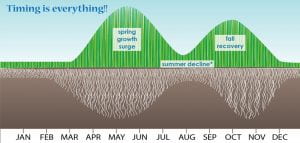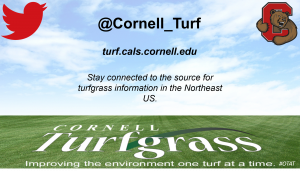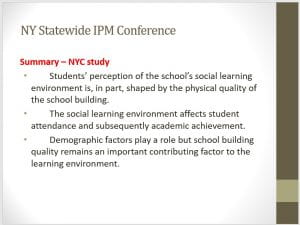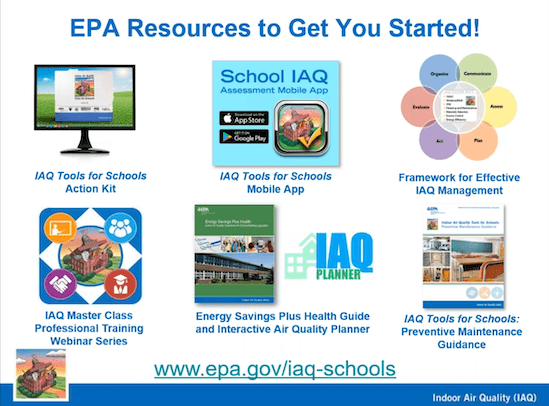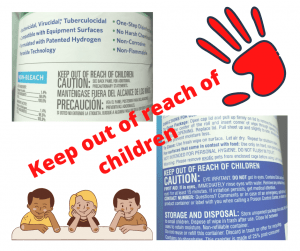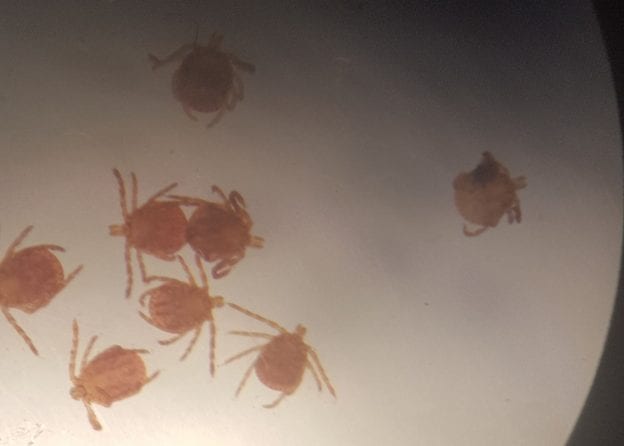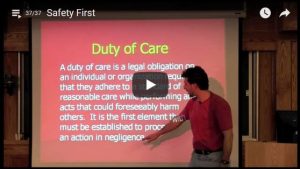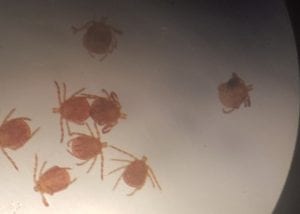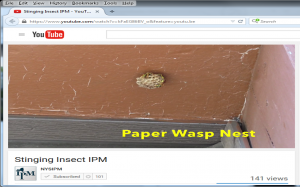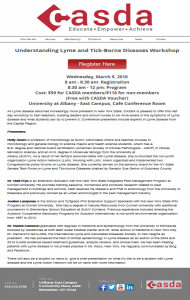A deep, extensive root system helps cool-season grasses build up reserves to get through the winter, green up top growth in spring, and minimize vulnerability to insects, diseases and summer drought. Nutrients released from the soil, grass clippings and late season fertilization (feeding) will promote root growth. – Lawn Care: The Easiest Steps to an Attractive Environmental Asset
 Why we would talk about fertilizer on an integrated pest management blog? Fertilization helps grow healthy turfgrass. Dense stands outcompete weed seeds. Extensive roots can withstand some insect feeding without impacting turf quality. Proper fertilization provides your grass with the proper nutrients for growth and recovery.
Why we would talk about fertilizer on an integrated pest management blog? Fertilization helps grow healthy turfgrass. Dense stands outcompete weed seeds. Extensive roots can withstand some insect feeding without impacting turf quality. Proper fertilization provides your grass with the proper nutrients for growth and recovery.
And now is one of the best times for fertilizing sports fields, but it has come to my attention that the legality of fertilizer application is in question. There is a rumor that one needs to be a certified pesticide applicator to apply fertilizer to school grounds. We’ll label that as fake news. Addressed in an earlier blog, some wonder if they are restricted under the Child Safe Playing Fields Act. The answer to that question is no.
But that doesn’t mean that there are no fertilizer rules. Here are the caveats:
- Combined fertilizer and pesticide products (such as weed and feed) are covered under the Child Safe Playing Fields Act and do need to applied by a certified pesticide applicator.
- Fertilizer use does fall under the NYS Nutrient Runoff Law, which prohibits:
-
- Applying fertilizer containing nitrogen, phosphorus, or potassium between December 1 and April 1 (Nassau and Suffolk County have their own local laws restricting application dates)
- Applying fertilizer containing phosphorus unless you are establishing a new lawn or a soil test shows the need for phosphorus
- Applying fertilizer within 20 feet of a water body
- Leaving fertilizer on impervious surfaces such as sidewalks, parking lots, or driveways (fertilizer must be swept up, not washed off with water)
So now that we know fertilizer can be applied to school grounds, what is the minimum that should be done now to produce pest resistant turfgrass on fields that are used year round?
- Fertilizing -Apply 1 pound of 50% water soluble nitrogen per 1,000 sq. ft. in September and ½ pound of 100% water soluble nitrogen in mid-October. Note – if you do not have irrigation, it is worth waiting until the day before rain is predicted to ensure the fertilizer is watered in.
- Mowing -If the grass is growing, mowing should be conducted at least twice a week. Mowing increases shoot density by increasing tillering (stems that develop from the crown of the parent plant). More tillers means more traction and cushioning.
- Overseeding -Seed perennial rye at 2 pounds per 1,000 sq. ft. weekly in high-use areas. The athletes’ cleats will make the necessary seed to soil contact. This year’s drought makes this practice tricky. If you can borrow irrigation equipment, do so.
What if I can do more than the minimum?
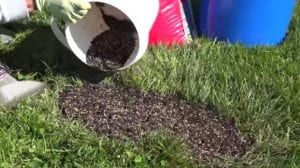
A divot mix of seed and soil can help fill in bare spots on the field. Click on the image to view a video on patching weak or bare spots.
- Fertilizing -Conduct a soil test to see if other nutrients are needed in addition to the nitrogen.
- Cultivating -Concentrating on high-use areas, solid tine cultivate in multiple directions to maintain infiltration of air and water.
- Overseeding -Have a mixture of one part seed to ten parts soil available so coaches and players can repair divots left after heavy use.
- Watering -Maintain adequate soil moisture but keep surfaces dry to maximize traffic tolerance. Irrigate if you can see your foot prints after walking on the turf.
For more information on maintaining safe, functional athletic fields, visit http://safesportsfields.cals.cornell.edu. You will find different maintenance schedules based on number of seasons used and resources available, detailed information on different management practices, and information on “Duty of Care”, a legal obligation to a standard of reasonable care. For the most up-to-date information, follow the Cornell Turfgrass twitter account.

